The Cuffed Jeans Chronicles: A Woman’s Guide to the Most Intentional Detail in Denim

In the vast and ever-evolving lexicon of fashion, few gestures are as quietly powerful, as subtly declarative, as the simple act of cuffing your jeans. This is not merely a functional fold to escape a muddy puddle or a hasty adjustment for an imperfect length. No, the deliberate cuff is a sartorial punctuation mark, a full stop that commands attention, a semicolon that invites a closer look, an exclamation point of personal style. It is a detail that transforms a ubiquitous garment into a unique statement, a whisper of intention in a world often shouting with trends.
For women, the cuff is particularly potent. It is a tool of proportion, a frame for cherished footwear, a nod to heritage, and a declaration of modern self-awareness. It bridges the gap between the utilitarian and the aesthetic, offering a canvas for self-expression that is both accessible and deeply personal. This article delves beyond the surface of this style phenomenon, exploring its rich history, its psychological underpinnings, the art of its execution, and its unwavering relevance in the contemporary woman’s wardrobe. This is not just about rolling up your pants; it’s about understanding why that roll matters.
A Fold Through Time: The Unlikely History of the Cuffed Jeans

To understand the cultural weight of the cuffed jean, we must first journey back to its origins, which are rooted not in fashion, but in pure, unadulterated function. The story begins in the late 19th and early 20th centuries. Denim jeans, pioneered by visionaries like Levi Strauss, were primarily the uniform of laborers: miners, cowboys, railroad workers, and farmers. For these men, clothing was about durability and practicality. Children, too, wore sturdy trousers that were often handed down through siblings.
In this context, the cuff was a pragmatic solution to a common problem: length. Trousers were frequently produced in standard sizes, and a perfect fit was a luxury. A deep, turned-up cuff allowed a garment to be instantly shortened without the need for sewing skills or the expense of a tailor. This fold also served secondary purposes; some believed it could trap sawdust or metal filings in a workshop, preventing them from getting into boots, while for farmers, it could keep the hem slightly cleaner above the mud. This was the genesis of the cuffz, a born survivor, a feature of resilience.
The transition from function to fashion began in the post-war era, catalyzed by youth subcultures seeking to define themselves against the mainstream. The 1950s saw the rise of the greasers and the teen rebel, icons like James Dean. For these young men, the cuff on their blue cuffed jeans was a badge of cool, a part of a uniform that also included leather jackets and white t-shirts. It was a look borrowed from the working class but infused with a new, rebellious attitude. It said, “I am rough, I am real, and I don’t play by your rules.”
This adoption continued and evolved through subsequent decades. The punk movement of the 1970s and 80s embraced a more deconstructed, DIY aesthetic, sometimes pairing cuffed denim with heavy combat boots or Dr. Martens. But it was the 1990s grunge scene that truly cemented the cuffed jean as a widespread fashion statement for both men and women. Bands like Nirvana and Pearl Jam popularized a look of thrift-store finds and anti-fashion. For women, this meant slouchy, often light-wash jeans, cuffed high to reveal oversized, scuffed combat boots or Converse sneakers. The cuff here was raw, often frayed, and deliberately imperfect—a rejection of polished, corporate glamour in favor of authentic, lived-in nonchalance.
The new millennium saw the cuff being refined. As denim became a luxury commodity, with the rise of premium Japanese selvage denim, the cuff took on a new role: that of a connoisseur’s detail. The cuff was no longer just about shortening the leg; it was about proudly displaying the hallmark of quality, the colored selvage ID line running along the inside seam. This turned the cuff into a subtle flex, a sign that the wearer understood and invested in craftsmanship.
Today, the cuffed jean has been fully integrated into the global fashion lexicon, shedding its exclusively subcultural or masculine associations. It is now a versatile, feminine, and intelligent style choice. From the runways of Paris to the streets of Tokyo, the cuff persists, a testament to its unique ability to adapt, endure, and endlessly fascinate. It carries the echoes of its working-class roots and rebellious adolescence, but now speaks the language of modern, intentional style.
The Psychology of the Cuff: Why This Small Detail Feels So Empowering

On the surface, cuffing a pair of jeans is a simple, physical act. But beneath that fold lies a profound layer of psychological meaning. For a woman, getting dressed is often an act of crafting an identity for the day ahead. The choices we make, the color of a scarf, the cut of a blazer, the height of a heel—are all non-verbal communications. The cuff is one of the most nuanced tools in this arsenal.
At its core, the cuff is an act of intention. It is a deliberate edit. In an era of fast fashion, where trends are consumed and discarded at a dizzying pace, taking the time to personally alter a mass-produced item is a quiet act of rebellion. It says, “I will not just wear this garment as it was given to me; I will make it my own.” This transforms the jeans from a simple commodity into a personalized artifact. The wearer becomes the co-creator of her look, asserting agency over her appearance. This is a powerful feeling,it’s the difference between being a passive consumer and an active curator of your own image.
Furthermore, the cuff communicates a refined awareness of style rules and, more importantly, the confidence to play with them. A woman who cuffs her jeans demonstrates an understanding of proportion, balance, and silhouette. She knows that this fold can alter her entire line, shortening the leg to create a more dynamic relationship with her footwear. This knowledge is empowering. It moves her style beyond guesswork into the realm of strategic self-presentation. It’s a signal to the discerning eye that she knows what she’s doing.
There is also an element of practicality meets pride. The cuff is the ultimate tool for the “thoughtfully dressed.” It shows that she has considered her outfit from head to toe, literally. She has thought about which shoes she’s wearing, how the denim will interact with them, and what statement the entire ensemble will make. This foresight and attention to detail breed a deep-seated confidence. When you know you’ve nailed the details, you carry yourself differently. Your posture improves, your smile comes easier; you are grounded in the knowledge that your appearance is cohesive and considered.
Finally, the cuff can be a deeply personal signature, a sartorial tic that becomes part of one’s identity. Much like a signature lipstick shade or a favored piece of jewelry, a consistently well-executed cuff can become a woman’s style hallmark. It’s a small, consistent thread that runs through her varied outfits, providing a sense of continuity and personal brand. In a world that often demands conformity, these small, personal signatures are vital acts of self-expression and empowerment. They are reminders that our style is our own to define, one thoughtful fold at a time.
The Art and Science of the Perfect Cuff: A Masterclass in Execution
The theory and history of the cuff are compelling, but the magic truly happens in the execution. Creating the perfect cuff is a blend of art, an eye for proportion, and science, the mechanics of the fold. There is no single, universal rule, which is its greatest strength. The “right” cuff is the one that best serves the specific pair of jeans, the shoes, and the wearer’s intended vibe. Let’s break down the methodologies and the stylistic outcomes they produce.
The Foundation: Understanding Your Denim
The first step is to assess the jeans themselves. The fit and fabric are crucial determinants.
- Skinny Cuffed Jeans: While less common to cuff dramatically, a thin, single cuff can work well to create a clean line above ankle boots, preventing bunching.
- Straight-Leg Cuffed Jeans: This is the quintessential canvas for cuffing. The consistent width from thigh to hem provides a perfect, column-like base for a structured fold.
- Boyfriend & Mom Cuffed Jeans: With their slouchier, relaxed fit, these styles lend themselves to a thicker, more casual double or triple cuff. The goal here is often to create a sense of ease and a touch of that 90s nostalgia.
- Wide-Leg & Flare Cuffed Jeans: Cuffing these can be trickier but is highly effective. A very wide leg is often cuffed to create a more intentional, “fashion” look rather than a casual one. It highlights the dramatic sweep of the leg and works beautifully with sleek loafers or platform sandals.
- Fabric Weight: Stiff, raw denim holds a sharp, defined cuff beautifully. Softer, stretchier denim will create a softer, more relaxed fold. Both are valid, just different in character.
The Techniques: From Polished to Deconstructed
- The Classic Single Cuffed Jeans: This is the most straightforward and often the most polished approach.
- How-to: Create a clean, approximately one-inch fold all the way around the leg. Press it flat with your hands. The result is a neat, clean band of fabric that adds weight and definition to the hem without bulk.
- Best For: A timeless, Parisian-inspired look. Pair with ballet flats, loafers, or simple sneakers. It’s perfect for straight-leg and slim-fit jeans and conveys an air of effortless, pulled-together chic.
- The Substantial Double Cuffed Jeans: This is the workhorse of the cuffing world, versatile, confident, and full of character.
- How-to: Start with a one-to-two-inch initial fold. Then, fold it up again to the same height. The key is to ensure the second fold sits neatly on top of the first, creating a clean, rectangular block of fabric.
- Best For: Almost everything. It’s the go-to for boyfriend and mom jeans, fantastic with straight-leg cuts, and ideal for showcasing ankle boots or statement sneakers. It adds a touch of downtown edge and is the perfect balance between casual and considered.
- The Raw-Edge Frayed Cuffed Jeans: This technique leans into the cuff’s grunge heritage and celebrates texture.
- How-to: This can be a single or double cuff, but you intentionally do not hide the raw, cut edge of the denim. Instead, you let it fray naturally over time, or you can gently pull at the white threads to accelerate the process.
- Best For: Creating a relaxed, artistic, and slightly rebellious vibe. It pairs perfectly with chunky boots, canvas sneakers, and an overall laid-back ensemble. It tells a story of a garment that is lived-in and loved.
- The Pinroll Cuffed Jeans: A more technical and specific fold, the pinroll creates a tapered, streamlined finish.
- How-to: Pinch a small amount of excess fabric at the side seam of the jean leg. While holding this pinch, fold the entire hem inward and upward, rolling it tightly towards the knee. This creates a tapered, jogger-like effect.
- Best For: A very specific, streetwear-inspired look. It’s excellent for preventing baggy jeans from dragging on the ground and is almost exclusively paired with high-top sneakers or skate shoes.
Proportionality is Key: The golden rule, regardless of technique, is to ensure the scale of the cuff is in harmony with your body and your shoes. A very petite woman might be overwhelmed by a massive triple cuff on a wide-leg jean, while a taller woman can carry it with flair. Always try on your cuffed jeans with the shoes you plan to wear and view the full silhouette in a mirror. Adjust until the proportion feels balanced and intentional.
Cuffing as a Styling Superpower: Framing the Footwear and Beyond

Once mastered, the cuff becomes more than a detail; it becomes a foundational styling tool. Its primary superpower lies in its ability to frame and elevate your choice of footwear, fundamentally changing the energy of an outfit.
The Cuff as a Pedestal: Think of a cuff as the perfect display stand for your favorite shoes. A clean, single or double cuff creates a visual “stop,” drawing the eye directly downward and ensuring your footwear gets the attention it deserves. This is why the cuff is the ultimate partner for statement shoes. A pair of embroidered loafers, leopard-print slip-ons, or brightly colored block heels suddenly become the star of the show when given this defined, architectural frame. The cuff provides a neutral, structured base that allows the shoes to shine without competition.
Creating Visual Rhythm: The cuff introduces a horizontal line that breaks up the vertical line of the leg. This might sound like a negative, but in practice, it’s a masterstroke of creating dynamic proportions. By shortening the visual length of the jeans, the cuff can make you look more styled and put-together. It creates a clear, deliberate separation between the pant and the shoe, which is often more flattering and modern than a long, uninterrupted line of denim pooling over the feet.
Seasonal Adaptability: The cuff is a year-round tool. In the spring and summer, it is synonymous with a sense of breezy ease. Cuffed jeans with strappy sandals, espadrilles, or simple slip-on sneakers is a universal warm-weather uniform. It feels light, airy, and consciously casual. As the weather cools, the cuff seamlessly transitions, becoming the crucial link between your denim and your autumnal ankle boots or winter chelsea boots. It prevents bulky bunching and ensures the elegant lines of your boots are visible.
Beyond the Shoe: The Holistic Outfit Impact: The influence of the cuff extends beyond your feet. The choice of cuff informs the entire personality of your outfit. A sharp, single cuff with a blazer and a silk shell communicates a modern, professional-but-cool attitude. A thick, raw-edged cuff with an oversized band t-shirt and a beanie cultivates a relaxed, creative energy. By deciding on your cuff first, you can build the rest of your look around that foundational style decision, ensuring a cohesive and powerful sartorial statement from head to toe.
The Connoisseur’s Cuff: Selvedge Denim and the Celebration of Craft

For the true denim aficionado, the cuff is not just a style choice; it is an essential ritual, a non-negotiable act of respect for the craftsmanship inherent in a premium pair of jeans. This is most profoundly embodied in the relationship between the cuff and selvage denim.
What is Selvedge Denim? Selvedge (a contraction of “self-edge”) denim is woven on traditional, old-style shuttle looms. These looms produce a much narrower bolt of fabric, but the edges are finished with a continuous, tightly woven band, often featuring a colored thread, the iconic selvage ID line. This line, typically red but sometimes green, yellow, or other colors, is a mark of quality and authenticity. It signifies a slower, more artisanal production method compared to the wider, more efficiently produced non-selvage denim, which has raw, overlocked edges.
The Cuff as a Display Case: For a woman who invests in a pair of high-quality selvage denim jeans, the cuff is the primary way to showcase this hallmark of quality. Turning up the hem to reveal that vibrant, continuous colored line running along the inside seam is a point of pride. It’s a subtle, insider signal to those who know, a quiet declaration that you appreciate the history, the texture, and the artistry of denim. This isn’t a loud, logo-driven display of wealth; it’s a nuanced, intellectual flex based on knowledge and taste.
This act of display transforms the cuff from a mere styling technique into a celebratory gesture. It’s about honoring the “why” behind the garment’s existence. The stiff, unwashed nature of raw selvage denim also means it holds a cuff with a sharp, crisp authority that softer denim cannot replicate. Over time, as the jeans mold to your body and develop unique fades and creases, the cuff becomes a permanent part of their story. The fold lines become set, a testament to the wearer’s journey with the garment. In this context, the cuff is deeply personal and evolving, a living part of the denim’s biography.
Modern Manifestations: The Cuffed Jean in the Contemporary Woman’s Wardrobe

The cuffed jean has successfully shed any lingering dust of being a passing trend and has cemented its status as a permanent, versatile staple. Its modern manifestation is one of intelligent integration, adapting to the varied roles and aesthetics of today’s woman.
The Minimalist’s Anchor: For the woman who champions a capsule wardrobe and a clean aesthetic, the cuff is indispensable. It brings a sense of structure and intention to simple outfits. Think of a uniform of a white t-shirt, a pair of perfectly fitted straight-leg jeans with a sharp single cuff, and minimalist leather sneakers. The cuff here is the element that elevates the basics from “just clothes” to a considered, signature style. It provides the finish that makes the outfit look expensive and intelligent.
The Creative’s Playground: For the fashion-forward and experimental dresser, the cuff is a tool for play. It might involve cuffing a wide-leg jean high above the ankle to create a totally new, almost capri-like silhouette, paired with unexpected socks and Mary Janes. Or, it could mean an exaggerated, oversized cuff on a vintage pair of Levi’s, creating a sculptural, almost deconstructed effect. This approach treats the cuff not just as a hem adjustment, but as a central design element to be manipulated and reimagined.
The Professional’s Secret Weapon: Even in more formal or creative professional settings, the cuffed jean has found its place. Paired with a sophisticated blazer, a fine-gauge knit, and a pair of elegant block heels or loafers, a neatly cuffed jean communicates a modern, authoritative style. It says you are serious about your work but confident enough to infuse your personal style into your professional presentation. The intention behind the cuff translates into an impression of competence and attention to detail.
A Global Style Language: From the precision of Tokyo street style to the effortless nonchalance of a Parisian woman, the cuffed jean is a universal signifier of style literacy. It is a detail that transcends borders, connecting women across the globe through a shared understanding of proportion, personalization, and understated confidence. It is a common thread in the diverse tapestry of global fashion, proving that the most powerful statements are often made with the smallest, most deliberate gestures.
Conclusion: The Lasting Fold
In the end, the enduring appeal of the cuffed jean for women is a testament to its unique combination of history, psychology, and utility. It is a detail that is at once personal and universal, practical and expressive, humble and bold. It carries the DNA of cowboys and rebels, yet it has been gracefully adopted and refined as a powerful tool of feminine style.
The act of cuffing your jeans is a daily, accessible ritual of self-expression. It is a reminder that style is not about the price tag or the logo, but about the thought and intention you bring to your wardrobe. It is about claiming your space, defining your silhouette, and telling your story, one deliberate, confident fold at a time. So, the next time you slip into your favorite pair be they vintage Levi’s, modern selvage, or a comfortable stretch pair pause for a moment. Consider the shoes, consider the day ahead, and give them a cuff. In that small, intentional act, you are not just adjusting your clothing; you are curating your identity and participating in a rich, ongoing sartorial conversation.
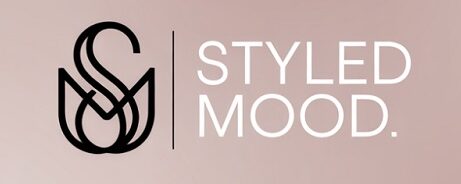

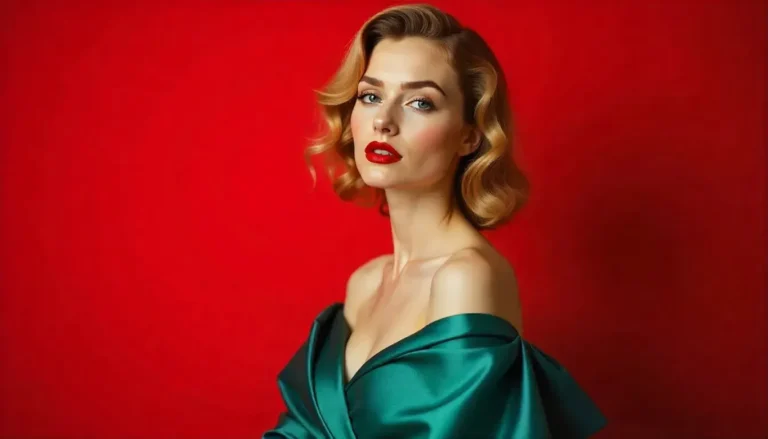

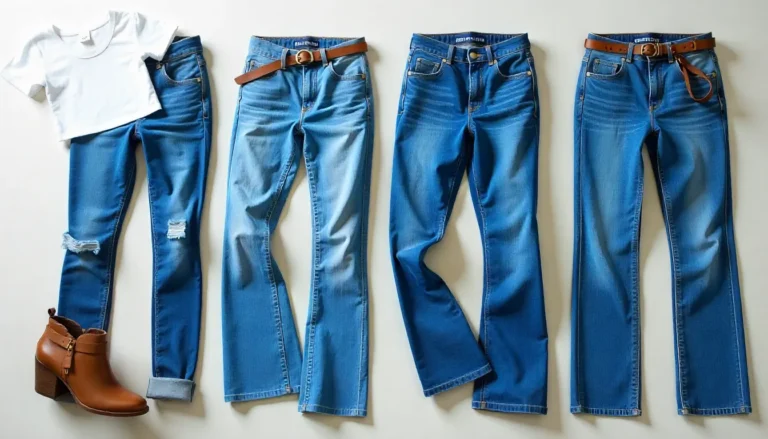
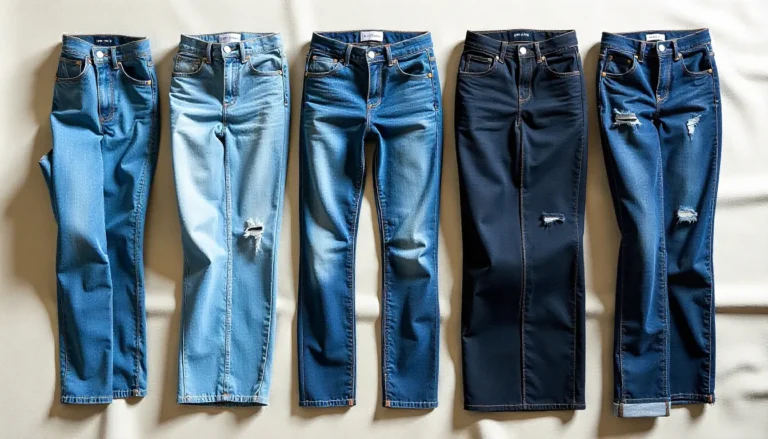
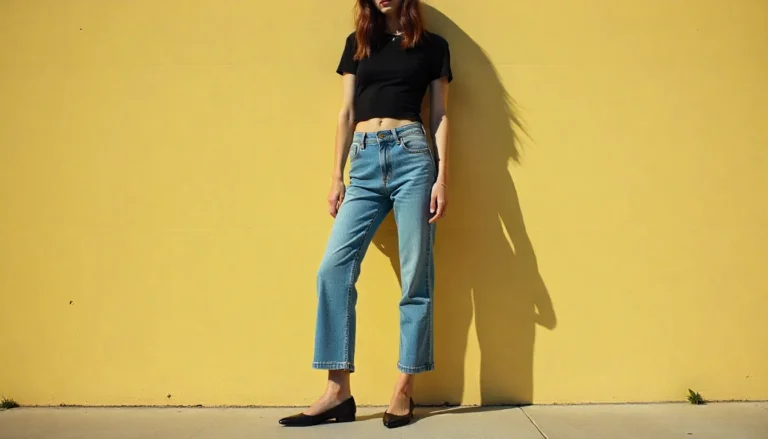

3 Comments